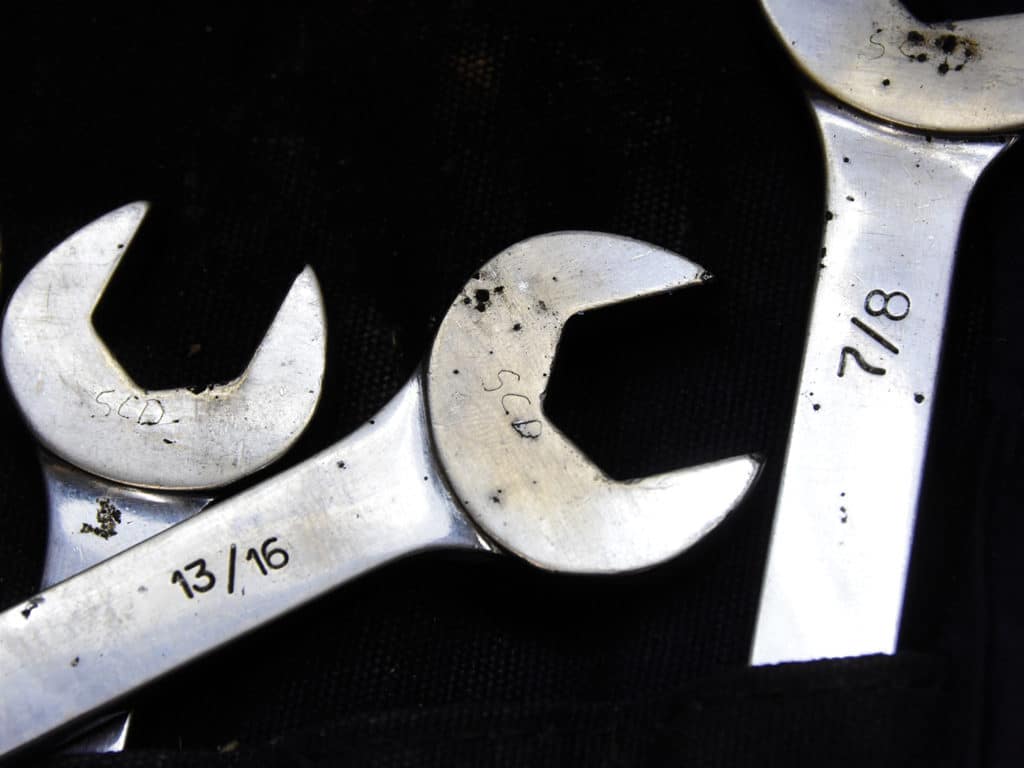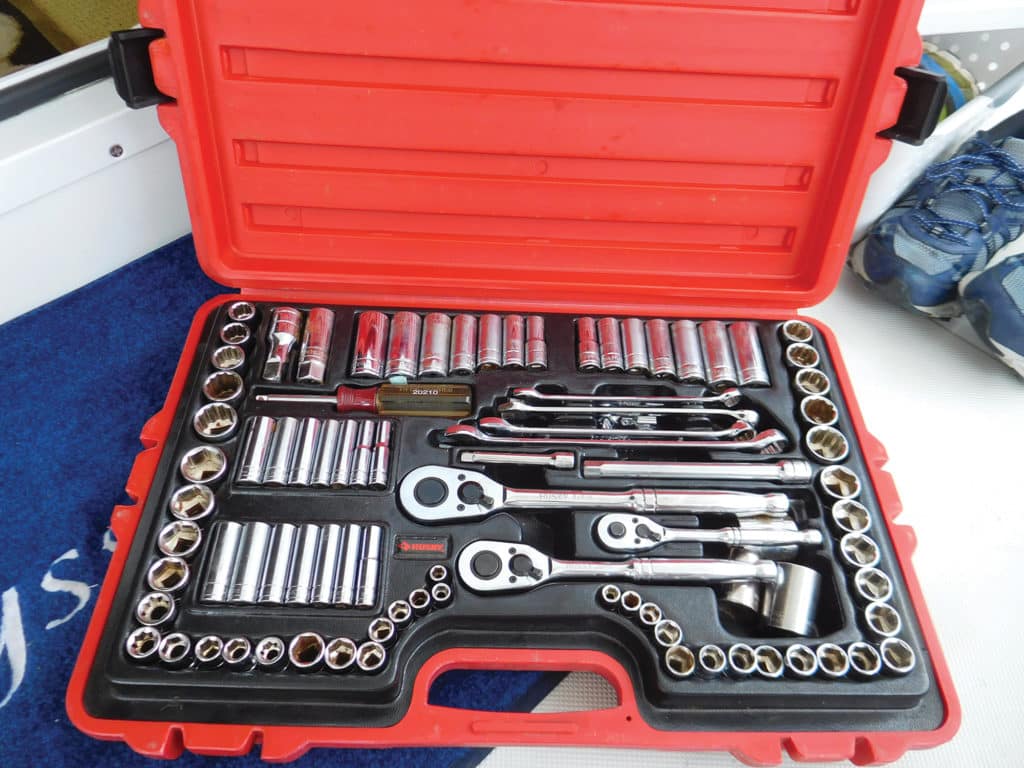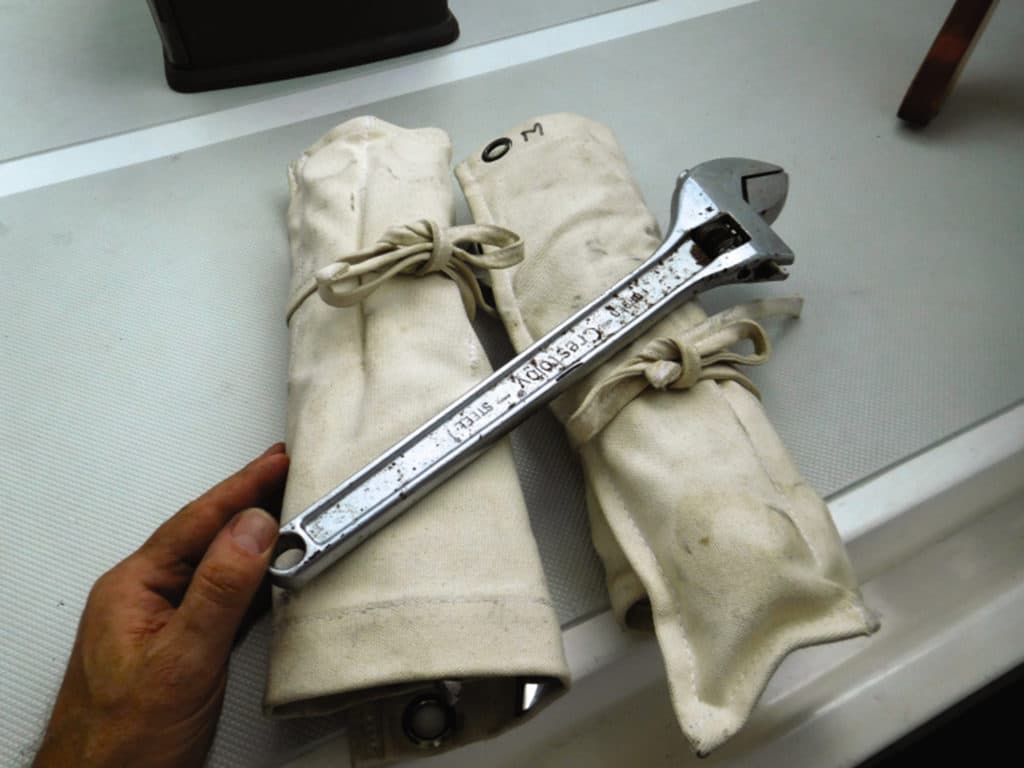
When I’m engaged in vessel inspections, I encounter many scenarios that make me wince, from mismatched seacock threads and open AC-power splices to broken strands in standing rigging wire and unseized anchor shackles. But there’s one thing in particular that evokes strong emotions within me: rusty or improperly maintained tools.
Tools are to a cruising vessel what paintbrushes are to an artist; without them, your passage, and cruising life, simply would not be possible. And yet, all too often I encounter vessels where tool maintenance and care are seemingly an afterthought. As a die-hard tool aficionado, this to me is sacrilege; as such, my goal is to inspire cruisers to take better care of the contents of their tool cabinets.
RELATED: Sailing Tools and Accessories to Have Onboard
Clearly the greatest threat to most tools—at least those made from ferrous metal, as most are—is rust. That’s nothing new; rust must be dealt with in other locations aboard, especially in the engine compartment, which is filled with an array of iron and steel components. However, preventing an engine, motor mount or alternator bracket from rusting is relatively easy: It simply needs to be painted. For hand tools, that’s usually not an option.
For tools such as pliers, screwdrivers, and combination and adjustable wrenches and sockets, a balance must be struck between inhibiting corrosion and keeping the tool useful and not too slippery when being handled. Most hand tools of this sort are chrome-plated, which affords a modicum of corrosion resistance; however, in a marine environment, even this barrier will eventually be breached. While there are exceptions, the higher the quality/cost of the tool, the heavier and more corrosion- resistant the chrome plating.

While making a passage to Bermuda a few years ago, a set of wrenches in a tool roll fell out of my tool bag and into the bilge of American Promise, the US Naval Academy sail-training vessel. It remained there for the entire summer, partially submerged, while the boat made various passages. When I was finally able to retrieve them at the end of the season, they were, much to my surprise, nearly corrosion-free—the result of an oily canvas tool roll and the heavy chrome plating.
My preference for corrosion inhibition in these applications is for a filmlike coating provided by light lubricants such as CRC’s 6-56 (in addition to aerosol, it’s available in a refillable spray bottle; I prefer the latter). Spray the tool, then wipe lightly with a rag that’s kept for this use; it will become damp with the lubricant, improving the process each time you use it. Be sure to apply extra lubricant at joints and moving parts such as pliers’ pivots, adjustable wrench rollers and slides, and ratchet gears. This coating will have to be periodically reapplied because it will wash or rub off with use.
For non-chrome-plated ferrous tools such as chisels, ball-peen hammers and hacksaws, a heavier film is required; in these cases, I prefer CRC’s Heavy Duty Corrosion Inhibitor. It dries to a slightly tacky, waxlike coating, one that won’t wash off even when exposed to running water, and its slight stickiness offers an excellent grip to boot.

Ideally, tools should be stored in plastic boxes or blow-molded cases (my previously mentioned tool roll was in a canvas bag, which fell over and dumped the wrenches into the bilge), which will provide protection against drippage and salt air, especially if well-oiled. Choose your box/case carefully—not all shed water; some use a split lid; others will leak through the handle, and others around the lid perimeter. I have occasionally opened one to find that dripping water had entered the box, allowing the tools within to be bathed in water, causing them to form a monolithic mass of rust. One of my plastic toolboxes has a gasketed and cam-action clamped lid, which is designed to shed water and spray alike, and it’s pretty much waterproof.
Tool care is a symbiotic relationship: Take care of them, and they will serve you well for years to come.
Steve D’Antonio offers services for boat owners and buyers through Steve D’Antonio Marine Consulting.








